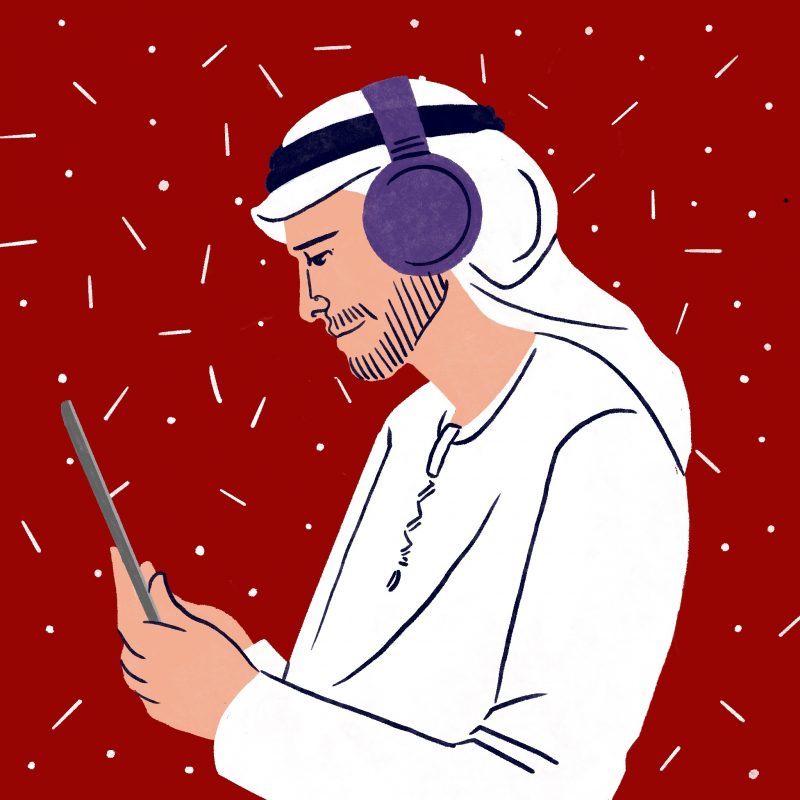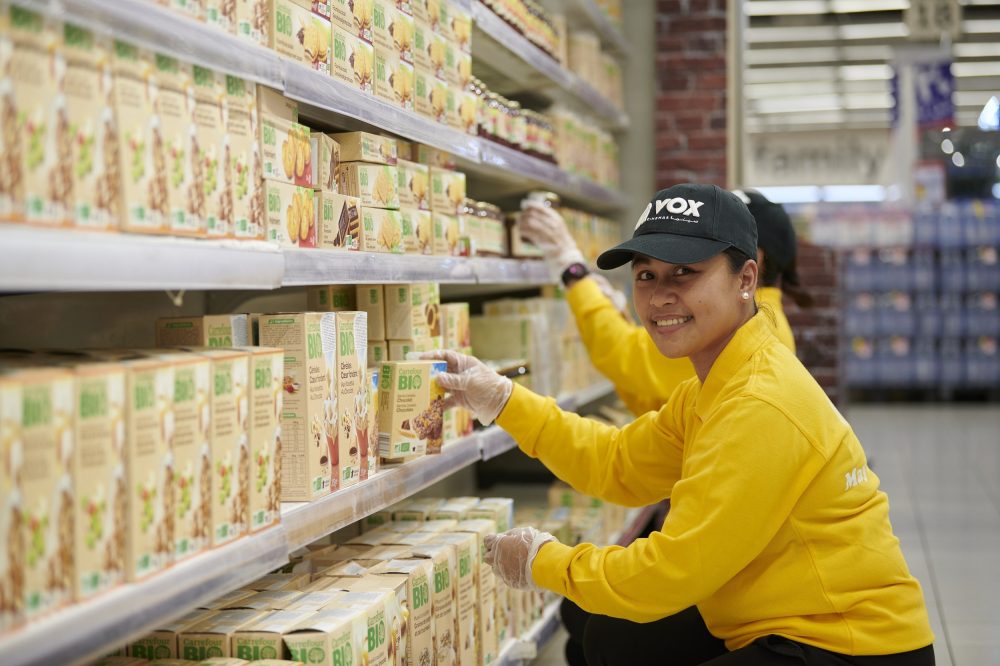Deconstructing Architectural Thinking
Interviews

March 7, 2019, 7:16 am
On the occasion of the ‘The Art of Sustainable Architecture’ exhibition organised in partnership with Dubai Design District (d3), Foster + Partners’ David Nelson, Senior Executive Partner, Head of Design and Gerard Evenden, Head of Studio explained how the company’s approach to design and the learnings from developing innovative projects in the UAE such as the sustainable Masdar City masterplan in Abu Dhabi, the Apple store in Dubai Mall and the Index Tower in Dubai.
Q: The company have an impressive experience spanning across the globe. What helps UAE’s architecture stand out, on a global scale?
David Nelson (DS): In the UAE, things move quickly. Change is embraced and there is willingness and openness to explore it. This attitude is driven by the long-term desire to look beyond oil as the main source of income. While other countries or people have the resources, UAE is special because it is very focused.
Q: How have you adapted the Foster + Partners Responsibility Framework to the UAE?
DS: Foster + Partners pioneered a holistic approach to issues of energy, water, waste and transport that remains integral to the practice’s work, which includes the redevelopment of the Reichstag in Berlin, the sustainable Masdar City masterplan in Abu Dhabi, two of the world’s first ecological office towers – the Commerzbank in Frankfurt and the Swiss Re headquarters in London, and most recently, Bloomberg’s new European Headquarters in London – the world’s most sustainable office building, and Apple Park in Cupertino.
The practice’s approach is sensitive to location and the culture that has shaped it, often combining the latest advances in building technology with lessons drawn from traditional techniques.
Over the past fifty years, the practice has developed a bespoke Foster + Partners Responsibility Framework (FRF) that helps evaluate projects – from urban masterplans to private homes – in a holistic manner. Based on ten sustainability related themes – Wellbeing, Community Impact, Energy and Carbon, Mobility and Connectivity, Resources, Water, Land and Ecology, Social Equity, Planning for Change, and Feedback – the FRF goes beyond the environmental focus of commonly used sustainability assessment methods such as LEED, BREEAM and Green Star, by also including ideas of social justice and equity.
In the UAE, because it’s a very hot climate, priorities shift a little bit between one of the ten topics. In the end, even though the emphasis shifts, there is a balance between the elements.
Q: Briefly present some of the most important projects F&P has developed in the UAE and what makes them unique in your portfolio?
DS: All the projects we have developed have value to them, but there is no doubt that Masdar stands out. From what it was dreamt up to what it is today, its relevance has just increased. There was a lot of knowledge that we’ve discovered while developing the project, working with experts such as desalination plant manufacturers, investigating what works and what is needed. Masdar is also constantly changing and the value is there, and it can still be experienced.
Gerard Evenden (GE): Masdar City explores sustainable technologies and the planning principles of traditional Arab settlements to create a desert community that aimed to be carbon neutral and zero waste. The 640-hectare project is a key component of the Masdar Initiative, established by the government of Abu Dhabi to advance the development of renewable energy and clean-technology. The Masdar Institute is the first phase of the city to be completed and is a graduate-level, research-driven university with a focus on sustainable technologies. Embodying the principles of the wider development, the Institute’s campus has been built to consume half the amount of electricity and water as equivalent buildings, with all power generated on site.
Masdar was the starting point in creating large scale urban projects. Since then, we’ve seen projects getting bigger and bigger. Masdar offered us the opportunity to gather a lot of data – up until that point, nobody had actually been able to test some of the theories because nothing was built. For example, we proved within the urban framework of Masdar that there can be a ten-degree reduction in temperature, realised through different systems of shading. Before, engineering data could be modeled, but real data didn’t exist. The data and the knowledge that were acquired are being applied into our other, large-scale projects. It’s really about putting fact and science behind masterplans as opposed to building plans which are just graphic representations on a piece of paper.
I would also like to mention an experimental house we built as a test project in the UAE, in the desert, from our own funds, which is 100% recyclable. The construction was finalised in 56 days and it is one of the highest performance buildings. In the eight to nine years since its construction, there was no maintenance done to it and it looks fantastic. Technology can have that sort of impact, allowing components to come together in a sustainable way.
Q: What are your thoughts about the upcoming Expo 2020? What do you believe will be the architectural legacy the mega-event will have on the region and in the world?
DS: For us, the most important things have been the development and the thinking that led to the Expo 2020 decision to keep buildings and reuse them. With Expos being such a concentration of global input, there is a fascination for them. When we developed the UAE pavilion for the Expo in Shanghai, there were a lot of visitors who wanted to see the pavilion in order to understand what’s it like in the UAE. The challenge now, with traveling becoming more common, is how can Expos inspire, how can they show the future and get visitors excited about it?
GE: The way in which we are building now is also new, when thinking of deconstructibility of buildings, how buildings are constructed, how they are deconstructed. UAE was a pioneer in the thinking behind the Expo pavilion in Shanghai, as the building was moved back to Abu Dhabi, and now Foster + Partners is developing the mobility pavilion for Expo 2020, which is drawn and redrawn with a legacy in mind, so it’s reusable as well. The questions for us are always: how can buildings be made more sustainable, can they be constructed to perform better?
Q: How is sustainability driving architectural trends, in your opinion?
DS: I don’t think it’s driving trends strongly enough anywhere. It’s the truth. The word itself is so complicated. For Foster + Partners, over the years, the realisation that we have only one planet has become very real, and therefore, the target should be very clear everywhere: reduce the emissions, because that’s the immediate problem of warming and flooding and change. Sustainability for us is a broad issue. We have particular challenges in getting the emissions down. Sheikh Zayed did an amazing thing, he wanted to change the climate by planting many trees. Obviously, it’s an expensive thing, and even at Masdar, there are different ways to consider emissions reduction.
Q: Looking at the old buildings in the UAE, what can be learned?
DS: In extreme temperature conditions, over a long period of time, architecture evolved through trial and error, intuitive responses to things, not necessarily through complex architectural design, but from people’s creativity and desire to buil for themselves. There was a level of comfort that was reached using very simple materials, science, thinking about how providing shade gives cool, also temperature difference creates airflow. Today, if we can follow the same principles, and then supercharge them with technology, that can lead to great impact.
Q: What technological solutions or innovations are enabling you to integrate sustainability-related principles in your projects?
DS: We use 3D printing reach a level of performance that otherwise would have to be considered in different layers. Foster + Partners is part of a consortium set up by the European Space Agency to explore the possibilities of 3D printing to construct lunar habitations. Addressing the challenges of transporting materials to the moon, the study is investigating the use of lunar soil, known as regolith, as building matter. The practice has designed a lunar base to house four people, which can offer protection from meteorites, gamma radiation and high temperature fluctuations. The practice designed the geometry of the structure in collaboration with consortium partners – it is groundbreaking in demonstrating the potential of 3D printing to create structures that are close to the biological systems found in nature. Continuing the practice’s earlier design explorations for building in extreme environments and extra-terrestrial habitats with the Lunar Habitation project, Foster + Partners has been working on a modular habitat that won the NASA-backed competition to create a 3d-printed habitat on Mars. The design for the Mars Habitat outlines plans for a settlement constructed by an array of pre-programmed, semi-autonomous robots prior to the eventual arrival of the astronauts. The habitat – created in collaboration with industrial and academic partners – envisions a robust 3D-printed dwelling for up to four astronauts constructed using regolith – the loose soil and rocks found on the surface of Mars.
In terms of overall sustainability, technology related to growing and producing food and creating greenery without chemicals is a huge area of focus that can affect a lot of our world.
GE: There are fantastic developments going on in the UAE and one of them is material development: changes of perspective into how materials are being transformed into buildings. For example, we’ve used carbon fiber for the Steve Jobs Theater for the Apple office in Cupertino, which was the first major use of carbon fiber on buildings. The 50-meter diameter roof was created in Dubai and shipped out to California.
For a project in Oman, we are using glass reinforced concrete, which suits the climate better, as it’s light weight and it’s not holding heat so much. We’ve developed a lot of materials in Dubai or used them in innovative ways, which we are now applying in other projects in other parts of the world.
Q: What are your future plans in the UAE?
DS: Foster + Partners has just opened an office in Dubai, and we are focused on the Expo 2020 Mobility Pavilion and the Zayed Museum. There are a lot of things happening and we appreciate the UAE for its people who are driven by the desire to make a difference and a change and who are open enough to do that. And when those people get together magical thing happen.










